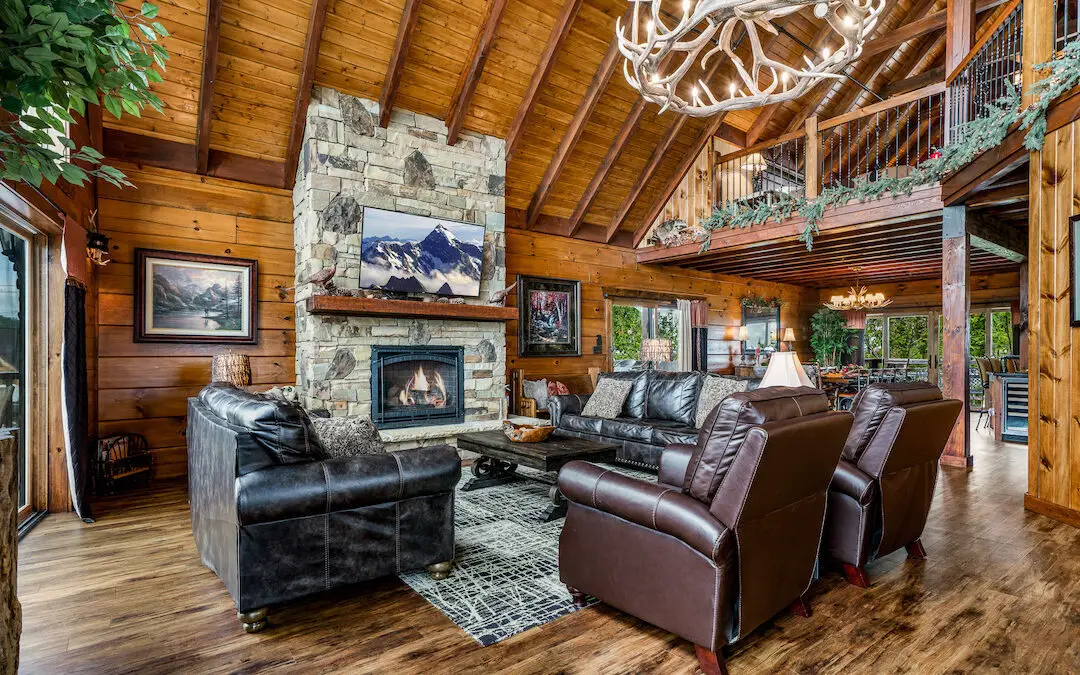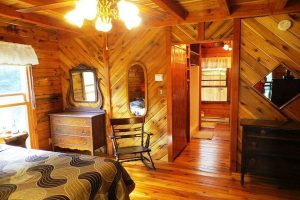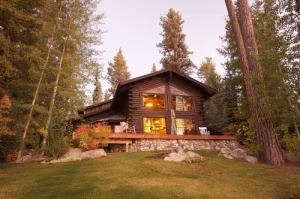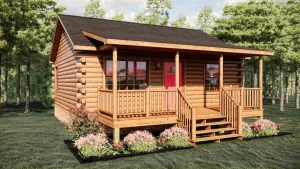Off-grid living and building a cabin is more than just a lifestyle choice; it’s a return to simplicity, freedom, and a close connection with nature. Off-grid cabin living offers peace, privacy, and purpose, whether you’re tired of the hustle and bustle of city life or simply want to live more environmentally friendly. Before you embark on this exciting and fulfilling journey, there are a few key things you need to know to make it a reality.
Understanding Off-Grid Living
“Off-grid living” means living without utilities like gas, water, or electricity. For cabin owners, this often means generating their electricity, collecting their own water, and disposing of their waste in an environmentally friendly way. Finding the right balance between comfort and efficiency means learning to live within your means while enjoying the peace and quiet of nature.
People love off-grid living because it gives them freedom. By managing your energy, food, and water, you can save money and reduce your impact on the planet. But this requires careful planning, effective processes, and a commitment to continuous improvement.
Choosing the Right Location
The location of your log cabin is crucial for your off-grid lifestyle. When looking for land, make sure it has natural resources like water, sunlight, and wood, and that there’s no risk of flooding or heavy snowfall. Proximity to a freshwater source is particularly helpful, as it reduces reliance on water storage systems.
Before purchasing land, you should also check local building and zoning regulations. Certain areas enforce strict regulations for off-grid living, so please ensure that you can construct a self-sufficient home on the land. Another important factor is accessibility. Even if privacy is important, you should still be able to easily travel to nearby locations for groceries or running errands.
Generate Your Own Energy
Living off-grid means you’re not reliant on electricity. Fortunately, modern technology makes it easier than ever to power your log cabin in an environmentally friendly way. One of the most popular options is solar panels, which are reliable and energy-efficient. If you’re planning a solar system, it can power your lights, tools, and even heating.
Small wind turbines can help generate solar energy in windy areas. Micro-hydroelectric plants are also ideal for homes near rivers or streams, as they provide a stable power supply even on cloudy days.
It’s also important to have a backup system (such as a battery or small generator) to ensure your power supply remains stable even during extended periods of darkness or wind.
Water and Waste Management
Water is essential for off-grid living, and it’s crucial to use it wisely. Depending on where you live, you may have access to a well, a rainwater harvesting system, or a natural water source nearby. Installing a suitable filtration and purification system ensures your drinking water is safe and readily available.
Composting toilets are a common and environmentally friendly way to dispose of waste. They conserve water and create nutrient-rich soil suitable for plant growth. Greywater treatment systems recycle water from sinks and bathtubs for the purpose of watering plants. Responsible waste management ensures your system functions properly and keeps the world safe.
Heating and Insulation
While a well-built log cabin is undoubtedly an excellent insulator, a suitable heating system can keep your home warm year-round. Off-grid homes traditionally used firewood for heating, and this remains the best option. They work well, are cost-effective, and perfectly suit the traditional log cabin lifestyle.
If you want to use green energy, solar water heaters or wood heating systems are good options. Properly insulating the floors, roof, and walls can often reduce energy consumption. This keeps your log cabin warm in the winter and cool in the summer.
Growing Food and Plants
Home cooking is often a part of off-grid living. Many people who live off-grid grow their own fruits, vegetables, and herbs on small plots. Others use greenhouses to extend the growing season. Raised beds, drip irrigation systems, and composting can help you grow food safely and efficiently.
Keeping animals like chickens or goats can also provide fresh eggs and milk, contributing to better food choices. It’s important to start small and learn as you go. Small-scale farming and horticulture not only help you become self-sufficient but also help you
If necessary, you can even work from home
Safety is also crucial. Keep a well-stocked first aid kit, learn basic emergency procedures, and stay in touch with neighbors or other cities. A backup power supply like a small generator or power bank can also save you in an emergency.
Create a budget for off-grid living
Living off-grid can save you money in the long run, but setting up your home requires investment. Land, solar panels, batteries, a water system, and building materials all cost money. You can save money by building your own shelter or buying a pre-built one.
As you grow your own food and generate your own energy, your costs will decrease over time. However, keep maintenance costs in mind, as batteries need replacing, systems need repair, and weather can cause unexpected damage.
Adjusting to off-grid living
Living off-grid is more than just a technical project; it also requires a change in mindset. It means learning how to reduce waste, manage resources wisely, and appreciate the simple things in life. It may take some time to master, but the benefits are enormous: freedom, peace, and a deeper connection with nature.
Living off-grid in a log cabin can also make you more creative and resilient. Everything you do, like cutting down trees for firewood, installing solar panels, or maintaining your garden, will make you more independent and happier.
Frequently Asked Questions
1. Can you live off-grid everywhere?
Not necessarily. In some places, it’s not permitted due to land laws or building codes. Check local regulations before purchasing land or starting construction.
2. How much does it cost to build a log cabin that doesn’t require electricity?
The price depends on the size, materials, and systems used, but a complete system with solar power, plumbing, and waste management costs between $50,000 and $150,000.
3. Can my family and I live off-grid?
Of course. With proper planning, many people can live comfortably off-grid. To meet everyone’s needs, you need sufficient space, energy, and resources.
4. What’s the best way to power an off-grid home?
Most people choose solar energy because it works well. It can be used again and again, requires little maintenance, and works well in most situations.
5. How do I dispose of my waste if I don’t have plumbing?
Composting toilets and graywater recycling systems work well and are more environmentally friendly than standard plumbing.
In short
Living off-grid in a cabin is both an adventure and a commitment. You have to work hard to be self-sufficient, but it gives you a freedom and peace of mind rarely found in modern life. By carefully planning your food, water, and energy systems and understanding how to budget and maintain them, you can create a life truly in harmony with nature.
Your off-grid cabin is more than just a place to live. Whether you seek freedom, freedom from harm, or simply inner peace, it can be the gateway to a meaningful and environmentally friendly life.




